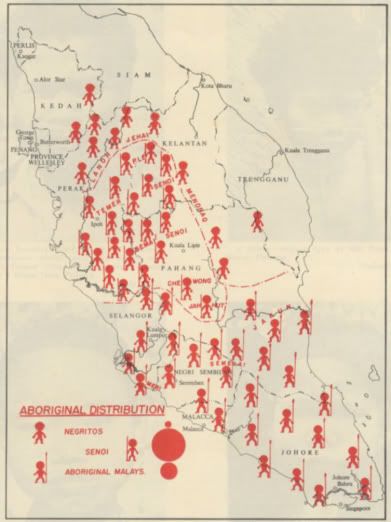
 |
|
|
|
|
#1 |
|
Member
Join Date: Dec 2004
Location: Land below the wind
Posts: 135
|
Michael,
Frankly, Sabah is NOT quite a place to find old blades apart from the odd ones here and there eg Moro kris, pakayun. Not quite a place for a collector to pick up older edged weapons. There's only one museum (in KK) and if you've been there you'd have seen a few old edged weapons like barongs, kampilans, Mandaus, Kris, keris, pakayuns, spears etc but no parangs. Personally I find the collection there rather small. Apart from Kota Belud, other new items are being made in Semporna, near Tawau. Your last example; In Sabah, it's unmistakeably a parang. Last edited by John; 18th December 2005 at 12:32 PM. |
|
|

|
|
|
#2 |
|
Member
Join Date: Dec 2004
Location: Sweden
Posts: 1,637
|
Tim,
I look forward to the picture. John, Thanks for all the info. I am ashamed not having visited the Sabah museum even if I have been in KK three times. Next time when in Semporna I will also take a better look. Last time, in 1991, I was to eager to go out scuba diving around Sipadan. Michael |
|
|

|
|
|
#3 |
|
Member
Join Date: Dec 2004
Location: What is still UK
Posts: 5,783
|
This is the picture of a very similar scabbard to Micheal's parang. Taken from a small book issued to British officers { An Introduction to the Malayan Aborigines, P.D.R. Williams-hunt } when faced with duty in the Malasian jungle. The book covers all aspects of life with a small mention of tools and weapons. In case the print is too small the caption reads- A Semelai carved parang sheath. Lipis District, Negri Sembilan. October 1950. Tim
PS, also interesting map. I wonder how much has changed. 
Last edited by Tim Simmons; 18th December 2005 at 04:48 PM. |
|
|

|
|
|
#4 |
|
Member
Join Date: Dec 2004
Location: Sweden
Posts: 1,637
|
Thanks Tim,
That was interesting. Is there any other weapon references in that book? Michael |
|
|

|
|
|
#5 |
|
Member
Join Date: Dec 2004
Location: What is still UK
Posts: 5,783
|
By Major P.D.R. Williams-Hunt
[The basic domestic utenensil without which no Aborigine can survive is the jungle knife or parang. In recent years I have only come across two Aboriginal blacksmiths, both Semelai, and then thier activities were confined to repairing damaged articles and fashioning small knives from scraps although in every community there are, of course, several individuals who can knock up fish spears and arrow heads from four or six inch nails. What happened before trade parangs were available from Malay and Chinese blacksmiths is not clear as even the earliest observers do not appear to have met a group entirely without some form of iron cutting tool. Presumably there were no ladangs{farmed clearings} and roots were grubbed up with pointed sticks whilst wild fruits and snared animals formed the main items of food. But iron trade goods have been available in Malay for many hundreds of years and the purely wandering root grubbing stage must have been passed at some remote period by most of our present day groups.] popular parang types [ (a) A tanged bill hook like tool some six to eight inches long in the blade and mounted in a straight rotan handle in the case of the Semaq Jeram Negritos elaborately decorated. This pattern is in general use with the Negritos and may also be found with the fringing Ple population. (b) A rectangular bladed knife from eight to sixteen inches in length by some two and one half wide (poular length is about thirteen inches in the blade) usually with a tang but sometimes found with an iron handle in one piece. Most Aboriginal groups fashion well made handles of soft wood for their parangs but the Orang Kanaq have not progressed beyond the stage of wrapping the tang with the latex of a jungle tree. The majority of Aborigines do not worry about parang sheaths but sheaths are found in limited use in all communites employing the second type of parang. Those of the Semelai are sometimes beautifully carved. The parang is kept razor sharp on a stropping stone, any fine grained stone is considered suitable, and used for cutting almost everything from tree felling to hair cutting. A parang hair cut is brought about by holding the hair over the sharp edge and pressing or rubbing with a soft block of wood. Needless to say a parang hair cut has a distinctive appearance which connot be mistaken.] there is also mention of the use of stone axes, bows and most famous of all jungle weapons the blow pipe. Judgeing by the carved scabbard in the picture, your parang with a similar scabbard could well be Semelai, which I think is rather nice to know. Tim Last edited by Tim Simmons; 18th December 2005 at 11:25 PM. |
|
|

|
|
|
#6 |
|
Member
Join Date: Dec 2004
Location: Sweden
Posts: 1,637
|
Thanks Tim,
This was a big surprise and great info. But I don't think I will try the parang hair cut  Michael |
|
|

|
 |
|
|